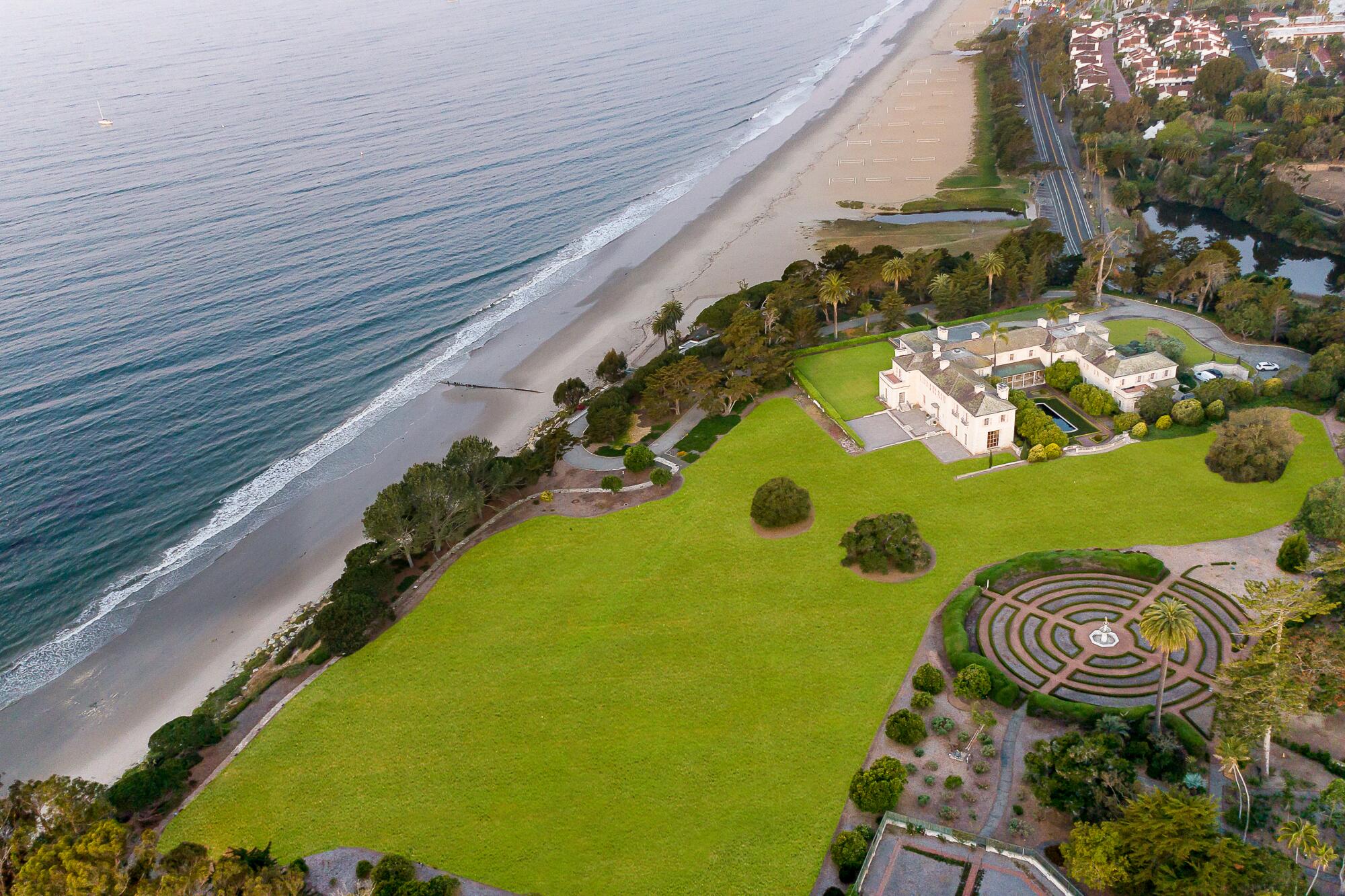
- Share via
The house, a French palace on a Santa Barbara bluff, stands as undisturbed as a crime scene, a pair of unstrung harps in the music room, china laid out on the dinner table, waves crashing on East Beach below.
This is the mansion that heiress Huguette Clark left behind — well, one of them. For half a century, as Clark (1906-2011) paid an estimated $40,000 per month to keep it unchanged, the coveted estate known as Bellosguardo remained no livelier than the cemetery next door.
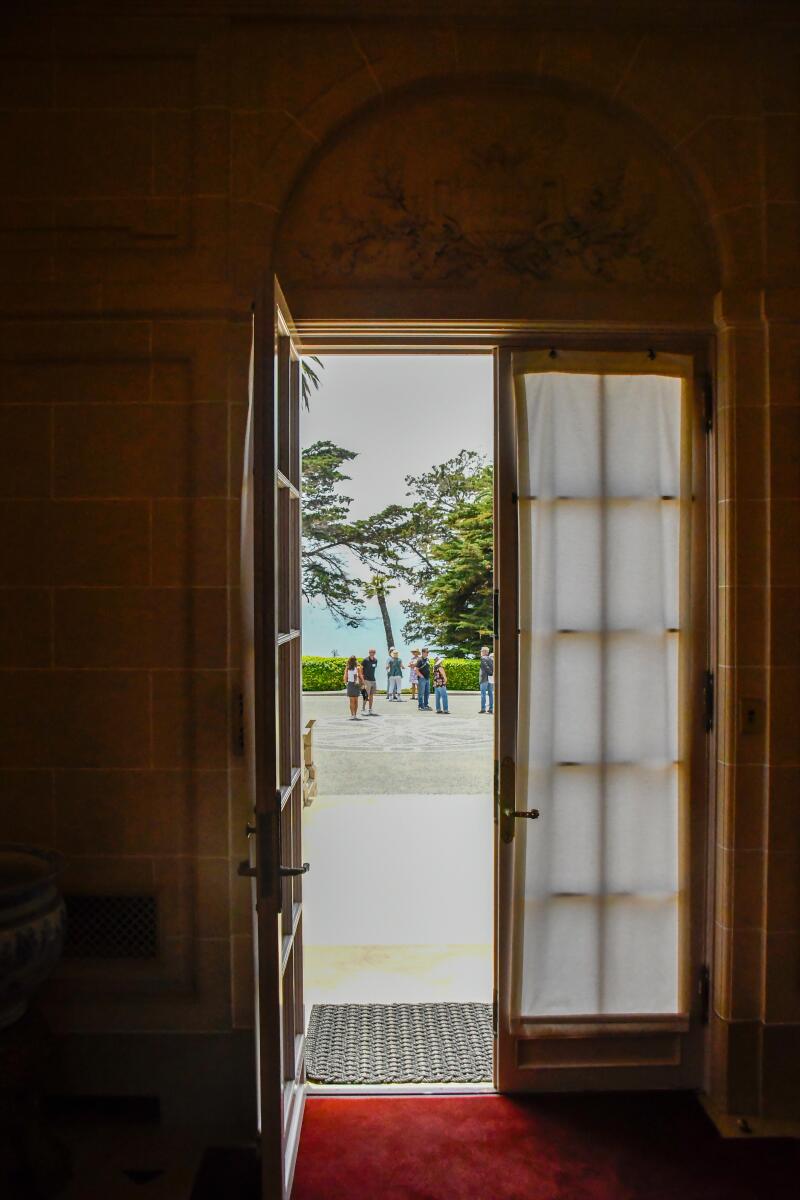
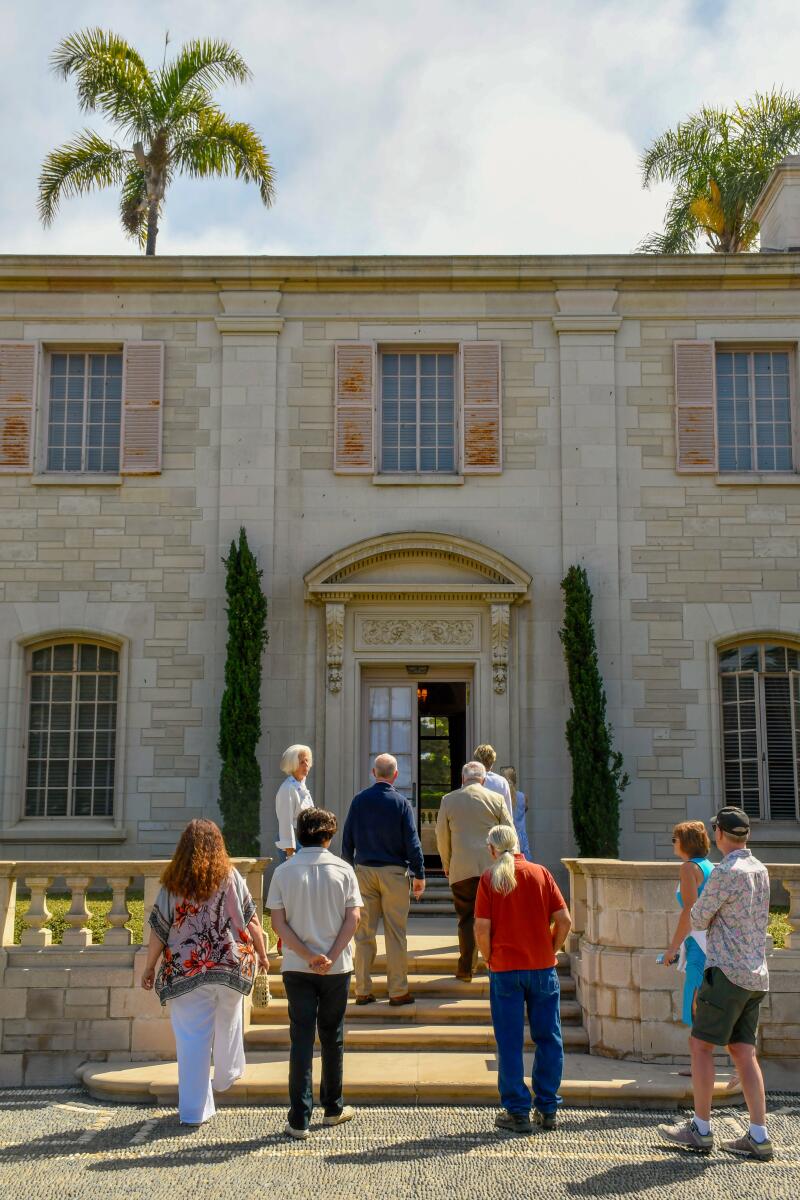
A tour group waits to enter Santa Barbara’s Bellosguardo Estate. (Christopher Reynolds / Los Angeles Times)
But now outsiders trickle in. For the last year and a half, the Bellosguardo Foundation has been quietly offering ground-floor tours for $100 a head, and it may soon open up more of the long-idle estate to visitors.
For anyone fascinated by great estates, robber barons, generational wealth or just human psychology, the tour is a chance to see territory that’s been off-limits for decades. It’s also a haunting illustration of what money can buy and what it can’t.
“We used to come to the cemetery and peek over the wall,” confessed Patti Gibbs, a longtime Santa Barbara resident who was among those on hand for the 10 a.m. tour one recent Wednesday.
“I’ve been waiting for them to let me in since I read the book years ago,” said visitor Peggy Simmons of Ojai.
The book she mentioned is “Empty Mansions,” by Bill Dedman and Paul Clark Newell Jr., which lays out the history of the Clarks and their homes in California, New York and Connecticut.
But stepping into the story is different from reading it. With docents Susan Bush and Cindy McClelland leading the way, Gibbs, Simmons and a handful of other visitors entered the front door.
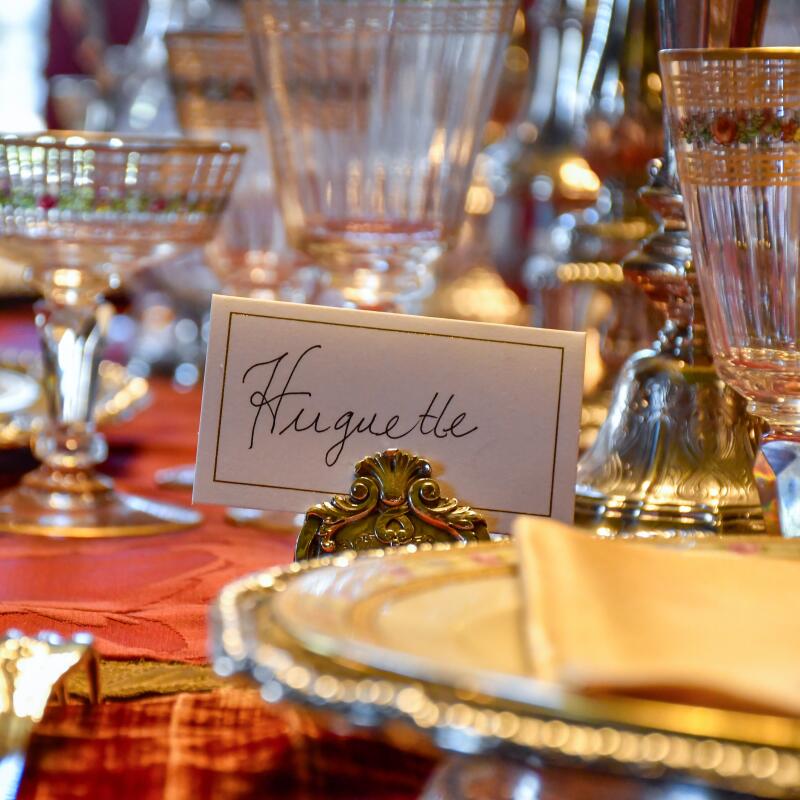
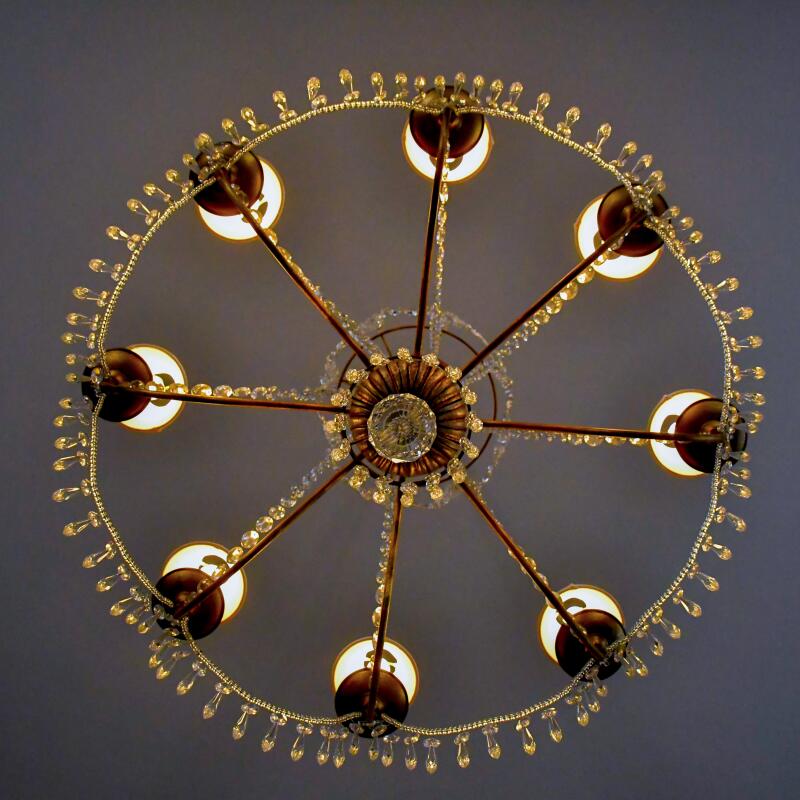
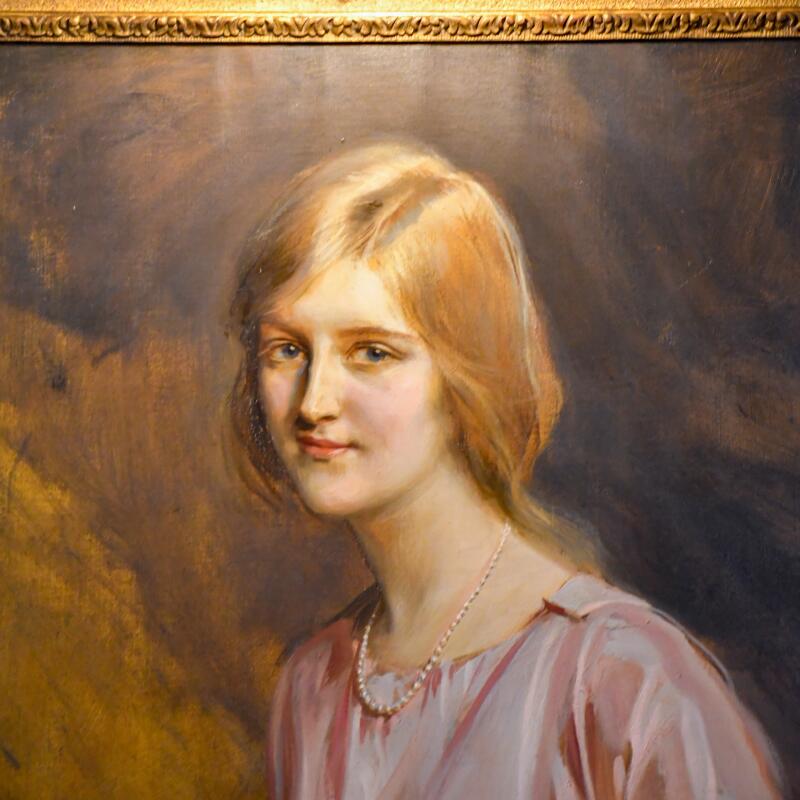
The dining room, set with dinnerware. One of many custom chandeliers — this one hangs in the mansion’s art studio. A portrait in the estate shows heiress Huguette Clark, who died in 2011 at age 104. (Christopher Reynolds / Los Angeles Times)
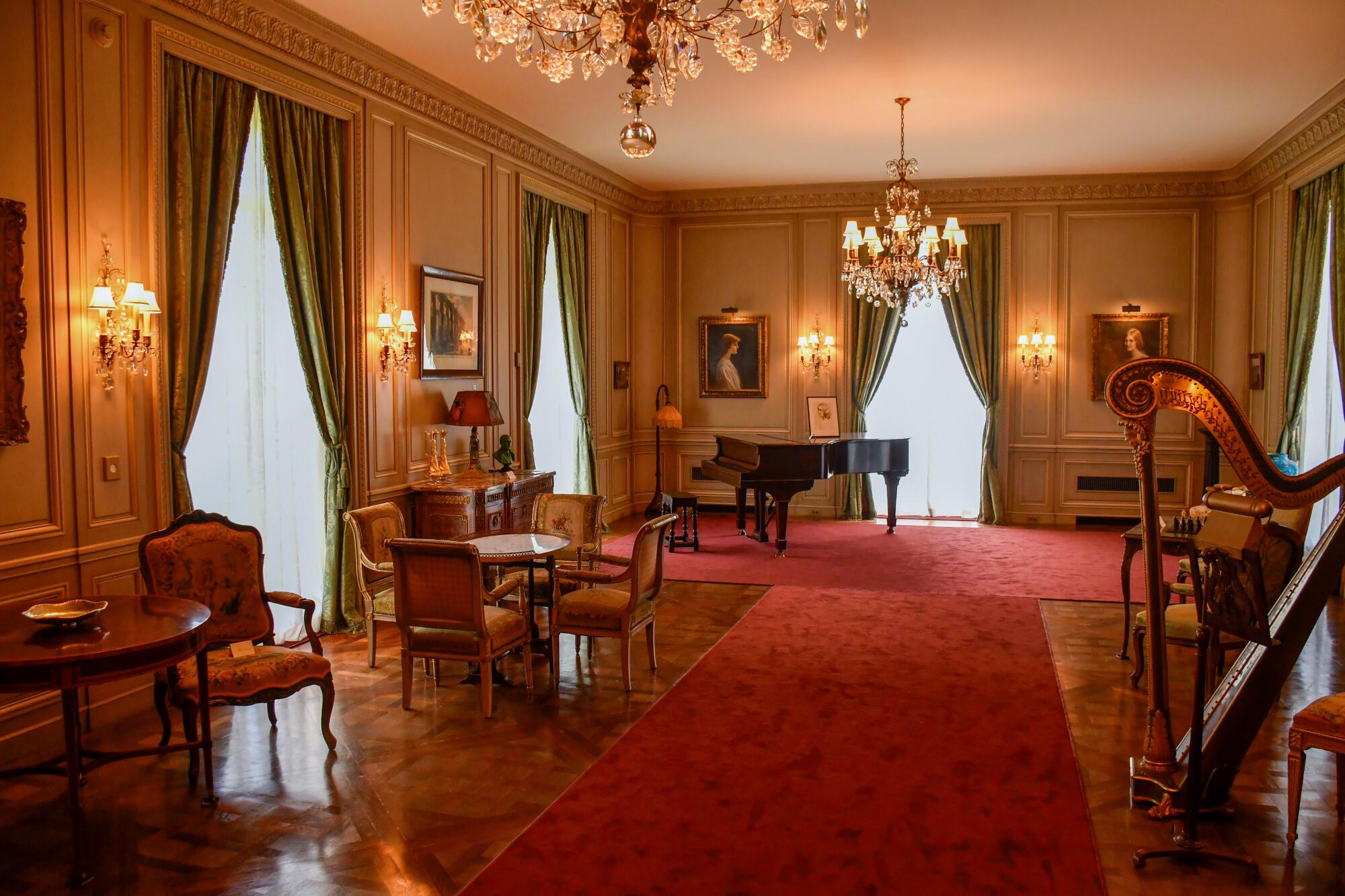
They examined the telephone room to the left, then the coat room to the right (with a portrait of a French World War I hero on the wall) and the Steinway piano at the foot of the spiral staircase. And they listened closely as the docents addressed the morning’s central questions:
Where did the money come from? And why did Huguette Clark put the mansion on pause?
The first answer is copper, mined, sold and leveraged by a slight, bearded man named William Andrews Clark.
Clark (1839-1925), born in a Pennsylvania log cabin, got rich in copper mining and built his first mansion in Butte, Mont. Later he built a railroad from Los Angeles to Salt Lake City, opened banks, mined more copper in Arizona, co-founded Las Vegas (seat of Clark County) and built another mansion, a 121-room behemoth on Fifth Avenue in Manhattan. (It has since been razed.)
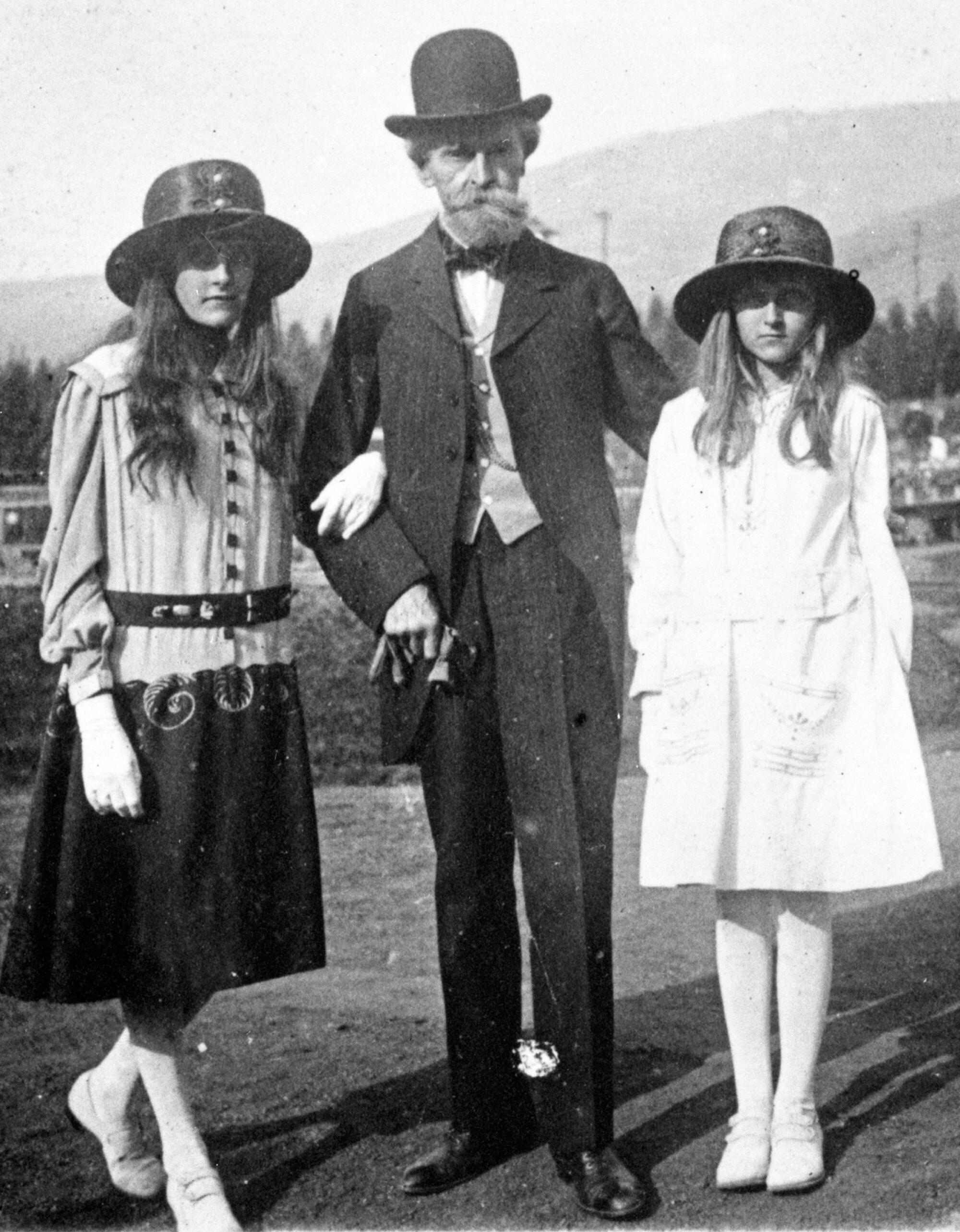
“He’s one of the richest men that nobody’s ever heard of,” McClelland told the visitors.
Along the way Clark got married, fathered seven children, lost his first wife to typhoid fever, remarried in his 60s and fathered two additional daughters. He also got caught bribing Montana state legislators, yet served a term as U.S. senator from that state. And his name does endure here and there.
His son, William Andrews Clark Jr., made the donations that started UCLA’s William Andrews Clark Memorial Library. Also, you could say the senior Clark inspired Mark Twain.
Clark, Twain wrote, “is as rotten a human being as can be found anywhere under the flag; he is a shame to the American nation, and no one has helped to send him to the Senate who did not know that his proper place was the penitentiary, with a ball and chain on his legs.”
Much of the Bellosguardo story, however, is about the next generation of Clarks. As the group advanced through the house, admiring custom chandeliers and golden bathroom fixtures, the docents pushed the narrative forward.
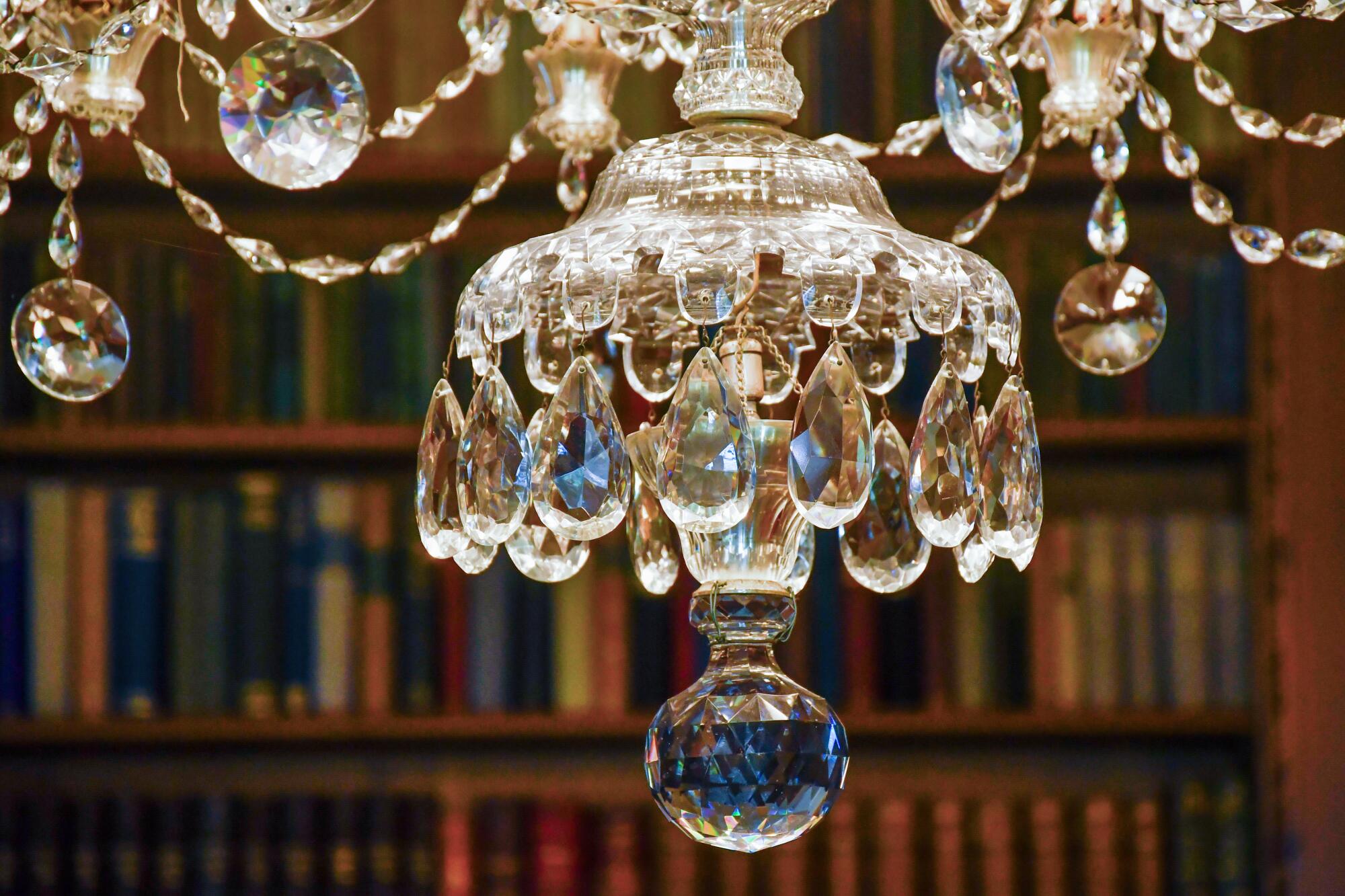
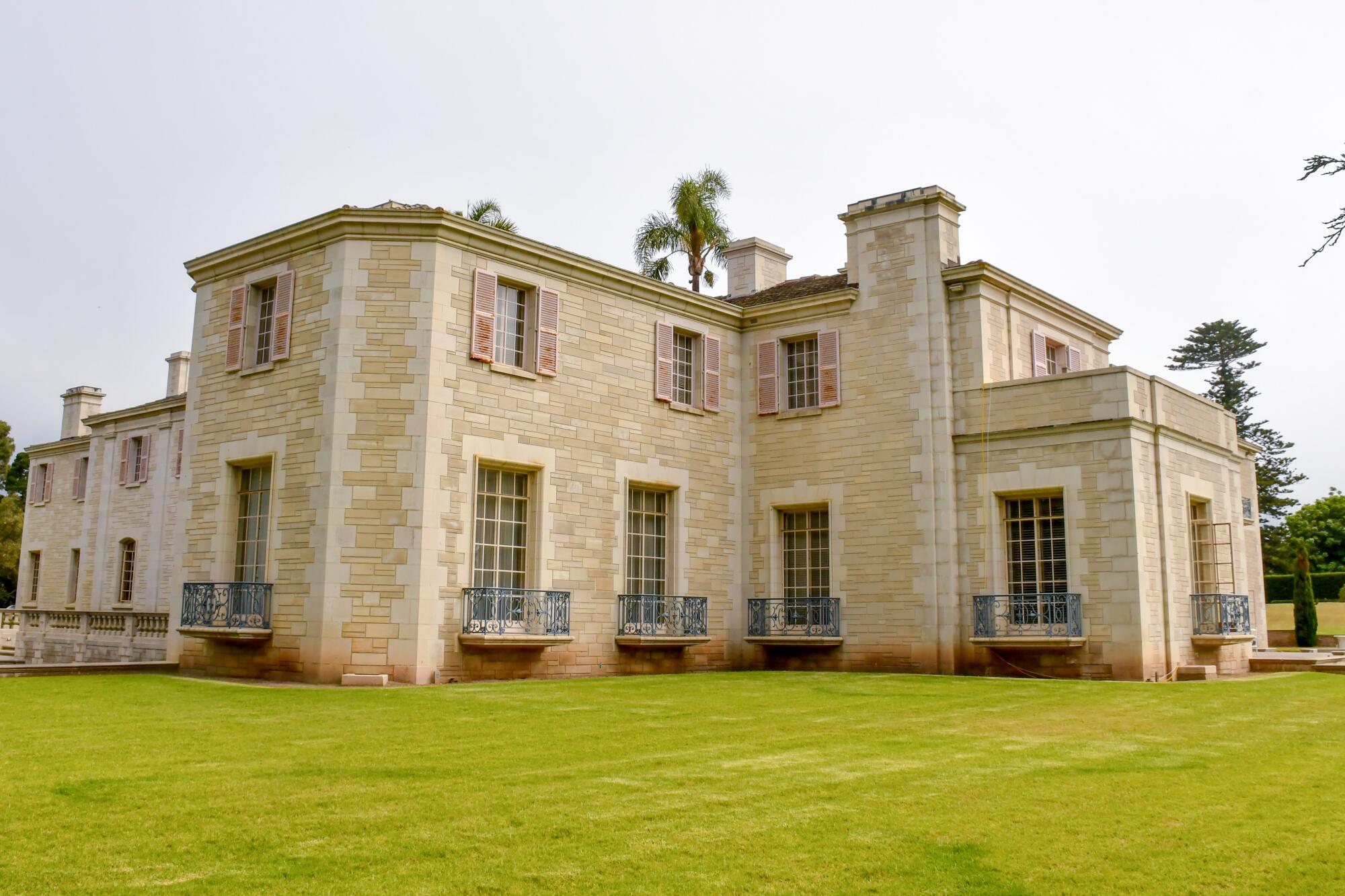
By summer 1923, when Clark and his second wife, Anna, arrived as renters at this 23-acre property above East Beach, he was one of the world’s wealthiest men. But he was in his mid-80s, 39 years older than Anna. Four years earlier, the couple had lost their older daughter, 16-year-old Andrée, to meningitis. Their surviving daughter, Huguette Clark, was now 17.
The Santa Barbara summer went well. By year’s end, the Clarks had bought the place for $300,000. But less than two years later, Clark died, leaving Anna and Huguette with a chunk of his fortune, the Santa Barbara property and the Italianiate villa that stood upon it, nicknamed Bellosguardo, or Pretty View.
So why, then, do visitors today walk through a French palace and not an Italian villa?
Because in 1933, as the country struggled with the Great Depression, Anna and Huguette Clark decided to level the villa (which had been damaged by a 1925 earthquake) and start over. Since they had lived several years in Paris and often spoke French to each other, they liked the idea of something French — a notable change from the Spanish Colonial projects popping up all over Santa Barbara.
Architect Reginald D. Johnson, designer of the Biltmore hotel in Montecito, delivered a rigorously symmetrical gray stone building (including one door that opens to nowhere) that paid minimal attention to ocean views. Two stories, 27 rooms, 13 fireplaces.
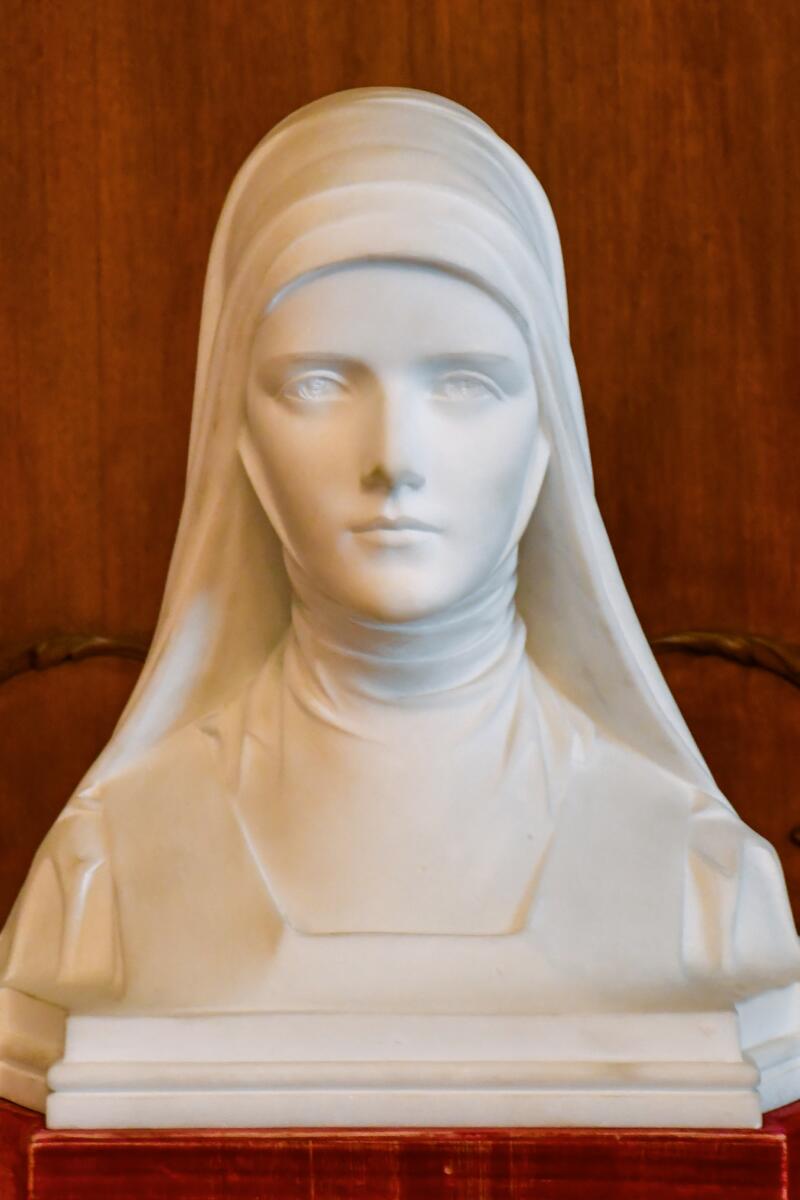
A sculpture in Santa Barbara’s Bellosguardo Estate shows Andrée Clark, a daughter of copper mogul William Andrews Clark who died in her teens. (Christopher Reynolds / Los Angeles Times)
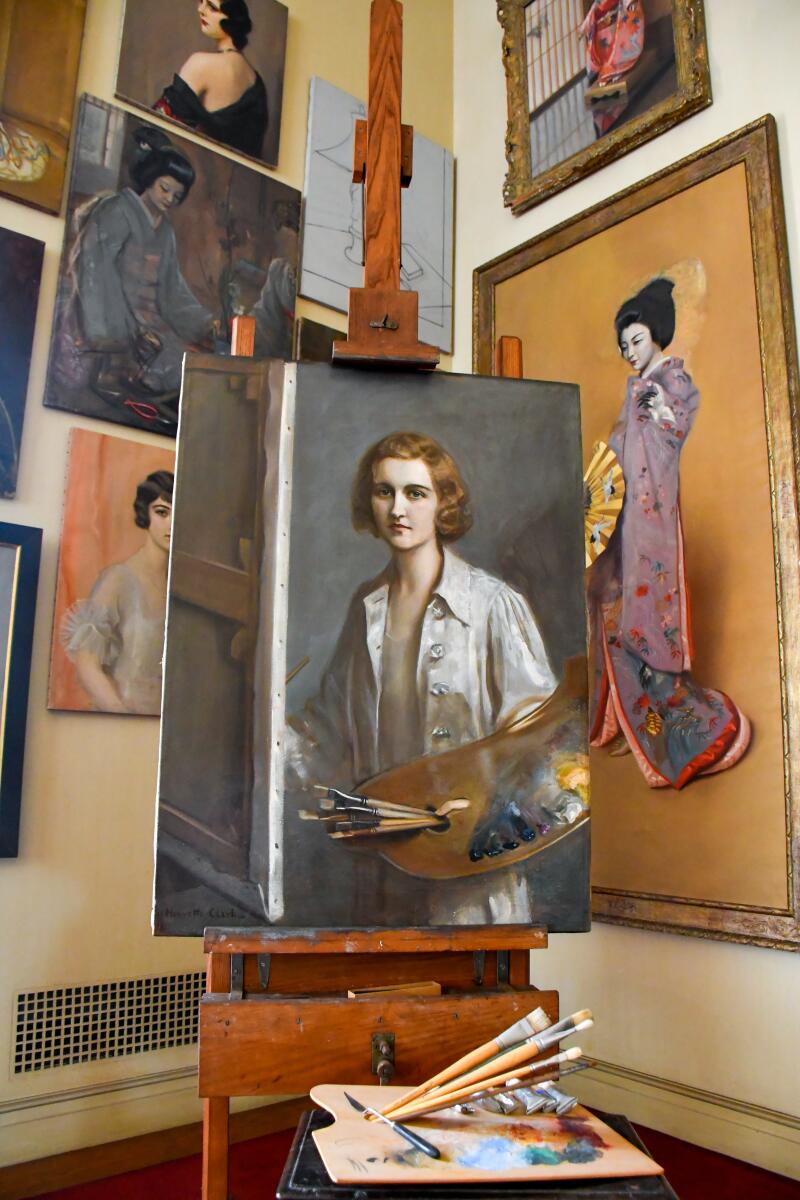
Santa Barbara’s Bellosguardo Estate include an art studio full of paintings by and of heiress Huguette Clark, who is seen in the work on the easel. (Christopher Reynolds / Los Angeles Times)
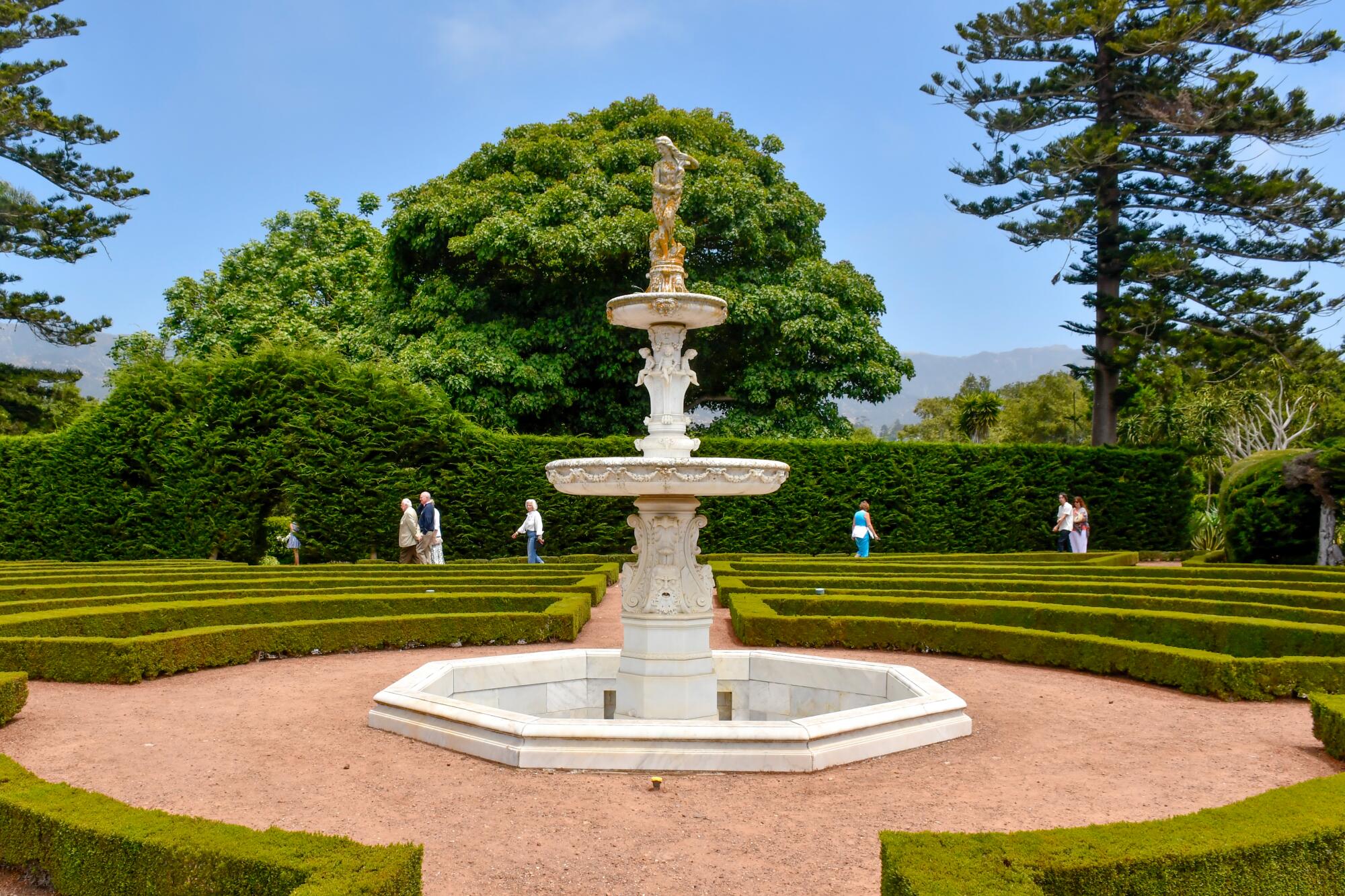
It’s subdued, but not dull. As visitors see, there’s a circular women’s powder room. Carved maple panels line walls in one room, while 160 carved oak panels dominate another. The building wraps around a stately pond, much of the furniture dates to the 18th century and the walls are hung with paintings of the French countryside and, in just about every room, portraits of Andrée and Huguette as doe-eyed girls.
“Reminds me of Hearst Castle,” said visitor Cherie Visconti, eyeing the dining room.
On the library shelves, Voltaire and George Eliot are joined by Agatha Christie and Erle Stanley Gardner, the Ventura lawyer and author who created Perry Mason.
The Clarks never lived here full time. By the foundation’s estimation, the mother and daughter made 14 visits (by train) between 1936 and 1953, staying about 18 months in all.
On those stays, Huguette, known for being shy but smart, played piano and violin, collected dolls and painted, including many portraits and still lives now hanging under the high ceilings of the mansion’s art studio. Having been married and quickly divorced in her 20s, Huguette didn’t date much.
Anna, an accomplished musician, played the harp and sponsored a string quartet (whom she outfitted with Stradivarius instruments).
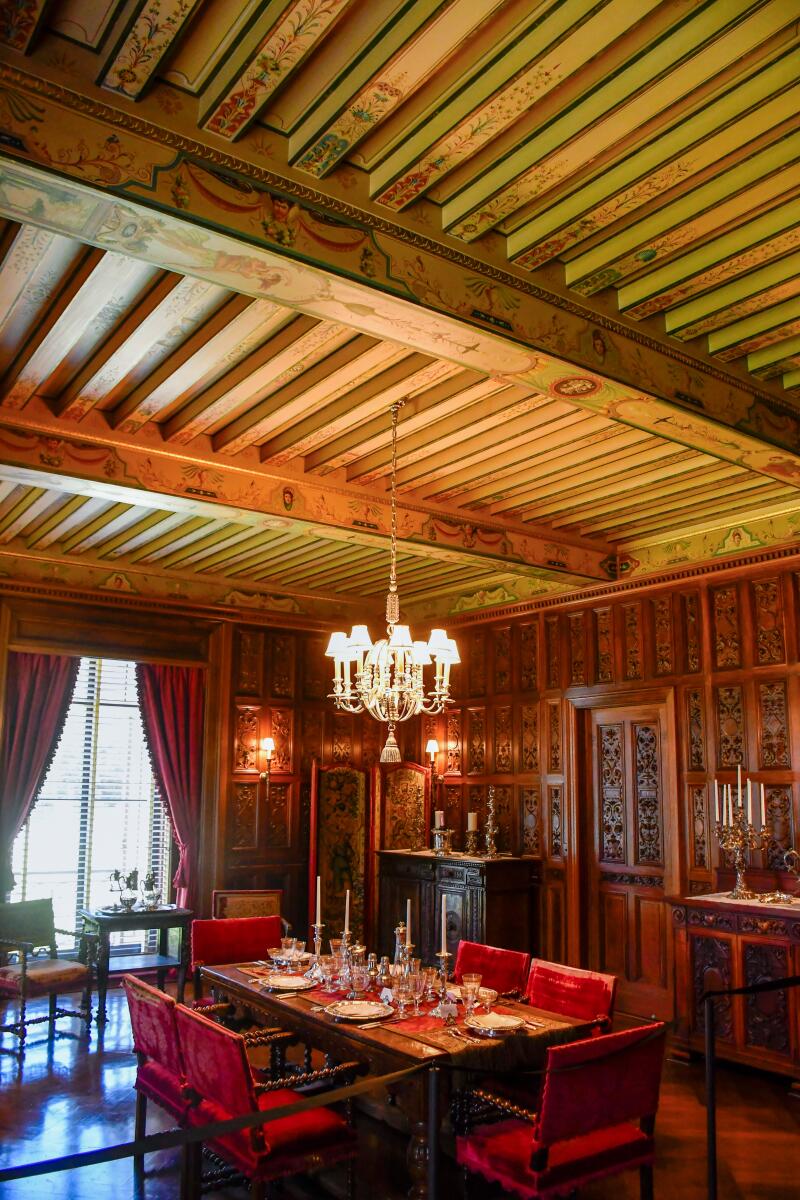
Dining room, Bellosguardo Estate, Santa Barbara. (Christopher Reynolds / Los Angeles Times)
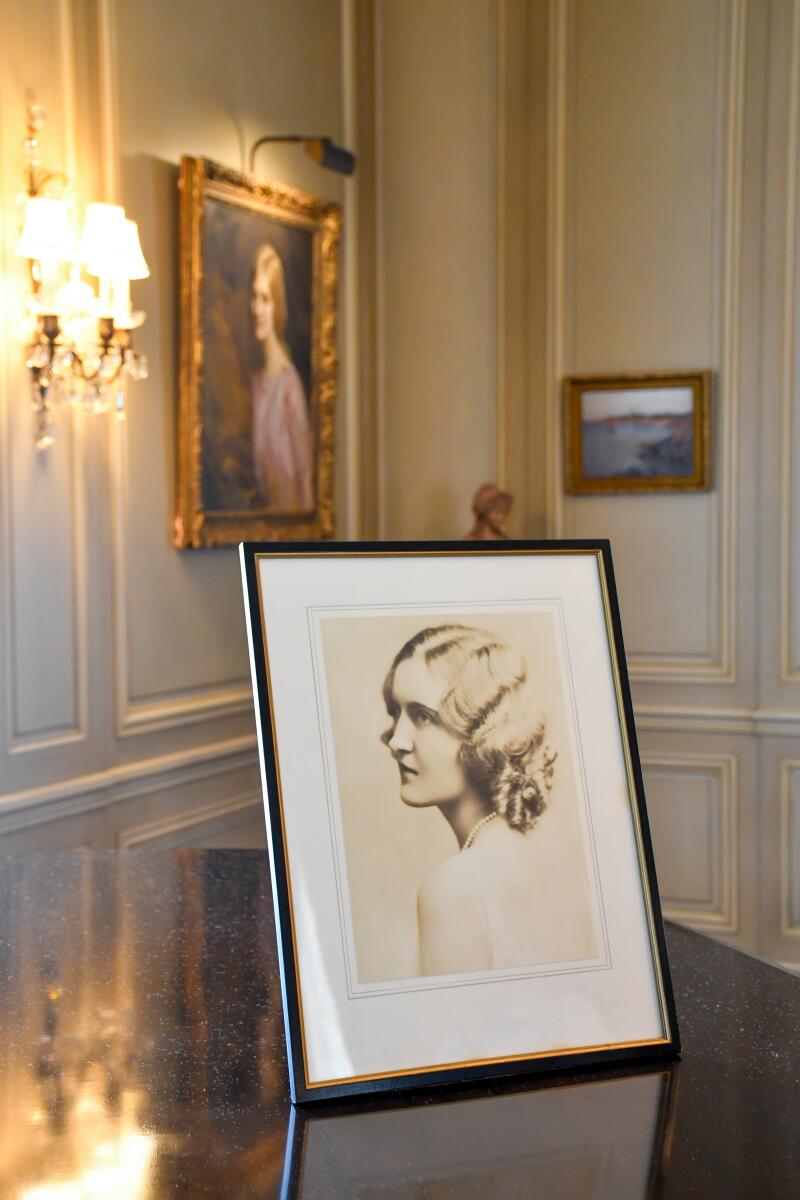
Portraits in the Music room of Santa Barbara’s Bellosguardo Estate include a piano-top photograph of heiress Huguette Clark. She is also shown in the oil painting in the background. (Christopher Reynolds / Los Angeles Times)
But by 1953, Anna Clark’s health had become too delicate for the train ride west, and Huguette stayed east as well. After Anna Clark died in 1963, Huguette, now in her 50s, continued to stay away. Later, she said that Bellosguardo held so many reminders of her absent mother that it made her sad. But not sad enough to let it go.
Now without her sister, father, mother, partner or a job, Huguette kept more to herself. She took pleasure in commissioning dolls and dollhouses, sending gifts to artisans, employees and their children. She checked photographs to make sure that staffers were keeping Bellosguardo unchanged, from the doghouse (whose occupant had died years before) to the 1933 Cadillac limousine and Chrysler convertible in the garage.
Then, one day in 1991, after a long spell without medical care, she summoned a doctor to her 42-room New York apartment (which was really three apartments combined). He arrived to find a wraith in her 80s, down to 75 pounds, suffering from multiple cancers that had disfigured her face.
Yet she survived. Once Huguette had been transported to a New York hospital, she responded well to surgeries. Choosing to remain in the hospital and rejecting all suggestions that she move home, she regained her health and lasted until her death more than 20 years, shortly before her 105th birthday.
For all those years, she not only left Bellosguardo empty but also a Connecticut mansion and the Manhattan apartment. From her hospital room, she bought more dolls, commissioned dollhouses, bid at auctions and rebuffed hospital officials when they pressed too often for donations. Meanwhile, she traded calls and letters with friends and employees, showering gifts on her favorites.
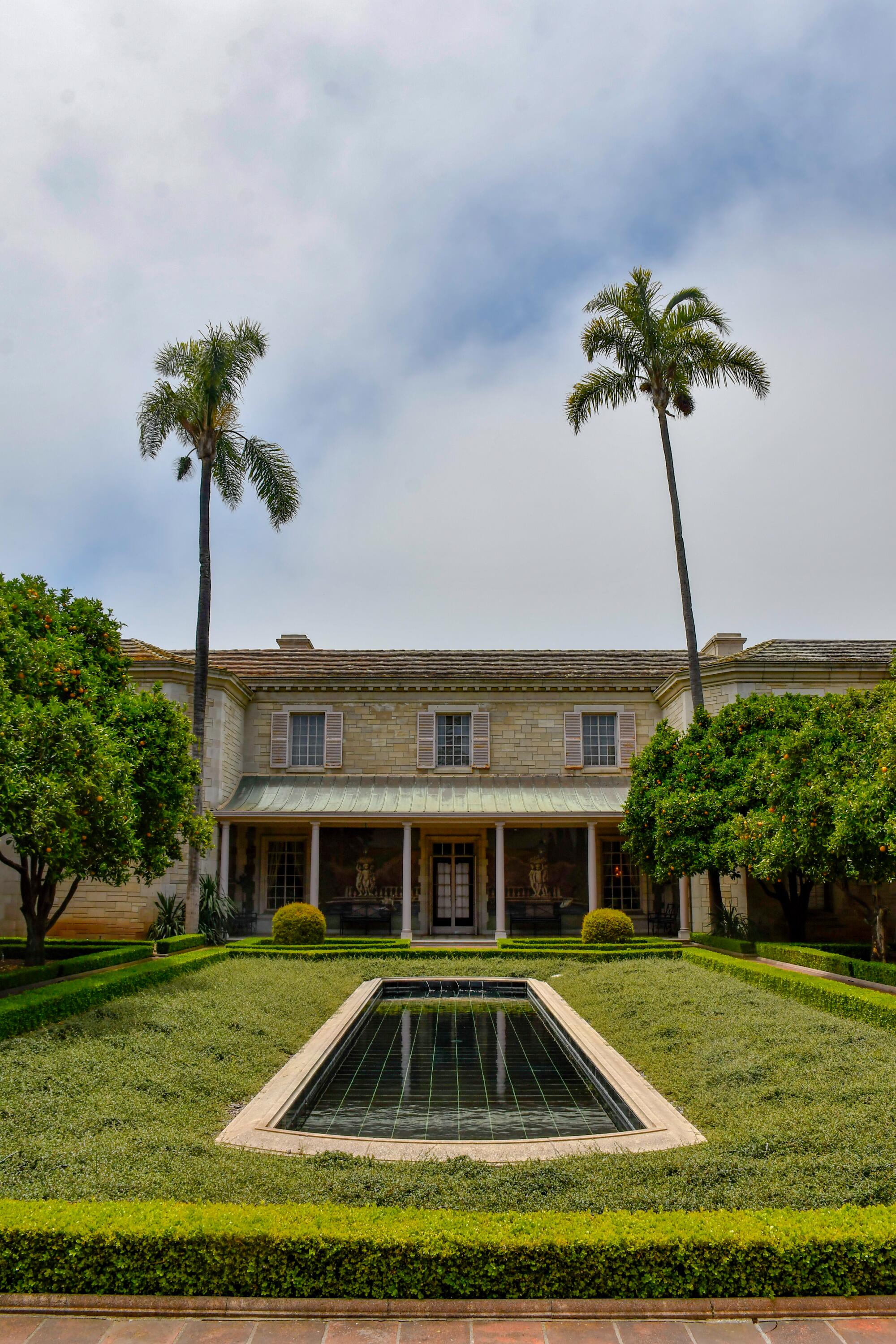
Over those last 20 years, authors Dedman and Newell write, Huguette spent an estimated $30 million on gifts (including six homes) for her day nurse, Hadassah Peri, who routinely worked seven-day weeks.
In many respects, they wrote, the Clark family saga is a classic folk tale — “except told in reverse, with the bags full of gold arriving at the beginning, the handsome prince fleeing and the king’s daughter locking herself away in the tower.”
The fighting over her estate persisted for years (she left two wills). In time, the Bellosguardo Foundation was created to operate the Santa Barbara mansion as an arts center. To some degree, this is par for the course in the neighborhood. Casa del Herrero in nearby Montecito has been hosting visitors for years, as has Lotusland, renowned for its gardens. But years passed before the first Bellosguardo tours happened, a delay that sparked complaints from some in Santa Barbara.
Now, the foundation director and docents say, an expansion of the tours is at hand.
Foundation Executive Director Jeremy Lindaman estimated that 100 to 150 people take tours each week. Others visit as part of occasional special events, such as a flamenco dance presentation that took place on the grounds last month during Santa Barbara’s Old Spanish Days Fiesta.
Bellosguardo tours
What: 90-minute tours led by a volunteer docent. Visitors must be at least 14, and no indoor photography is allowed.
When: Usually offered Wednesdays through Sundays, two or three per day.
Where: Bellosguardo, 1407 E. Cabrillo Blvd., Santa Barbara
Cost: $100
Info: For details and to sign up to be notified of tour openings, visit the Bellosguardo Foundation website
By late fall, Lindaman said, he’s hoping to add a second tour that covers the mansion’s more intimate quarters, including bedrooms and service areas. A coffee-table book is in the works, as well.
“Everything that was here when she died is still here,” Lindaman said.
But booking a tour is a two-step exercise. Instead of offering direct booking through the Bellosguardo website, the foundation asks would-be visitors to sign up for notification. Every two months, an email goes out and tour slots fill quickly.
Thanks in part to this process and the price, Bellosguardo remains a well-kept half-secret. For many in Santa Barbara, the family’s most visible legacy is not the mansion but the Andrée Clark Bird Refuge, a 42-area city park and lagoon just north of Bellosguardo, that Huguette Clark paid to create and maintain in her sister’s name.
Yet among those who get inside Bellosguardo’s gates, Huguette Clark and her family are still sparking speculation.
Walking the rooms, “You just feel that family,” said Penny Simmons. “Sad things happened around here.”
“I didn’t know she was such a fine artist,” Patti Gibbs said at the end of her tour.
“We think she lived the life she wanted to live,” said her docent guide, McClelland.
“She was not crazy,” said Peter Higgins of Oxnard. “She knew what she was doing right up until the end.”
More to Read
Sign up for The Wild
We’ll help you find the best places to hike, bike and run, as well as the perfect silent spots for meditation and yoga.
You may occasionally receive promotional content from the Los Angeles Times.







